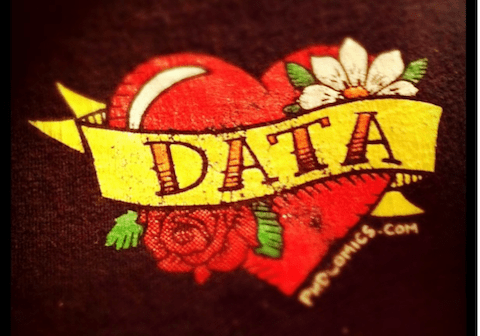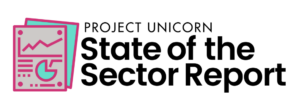Big Data: The Quest to Assuage Assange Fears

This was an exciting year in education. In 2013, Big Data found its seat at the table. 2013 ranks right up there with 1946, the year that the National School Lunch Act was passed. Many people were against it, some thought it was a terrible thing, now we couldn’t do what we do without it. So, yes, 2013 turned out to be a bumpy year, but before we relegate Big Data’s seat to one of those multipurpose, folding tables reserved for misfit relatives, let’s step back and assess where we’re at and where we need to go because Big Data will be at the core of what we do.
This year, Big Data has given us the most forward look yet into the future, and it’s a very exciting and promising future. Big Data is going to help us personalize education and usher in adaptive learning. The transformative change we are looking for depends on this data and the machines that crunch it. Those machines are smart and getting smarter. They take Socratic learning to scale. They use Big Data so that we can know our students and how they learn better than ever before. Big Data lets us make data-driven educational decisions not just at quarterly checkpoints but every single day in every single class. Machines can use data to take personalized, adaptive learning to scale with infinitely greater speed and accuracy.
Keep in mind that while Big Data has just now taken a seat at the education table, it has been dining with everyone else for a long time. Compare our collection and analysis of data to that of a stockbroker. When investing in a stock, a broker can see a detailed profile of a company’s size, quarterly revenue, who the competitors are, current value of the stock, who runs the company, current balance sheet, and so on (all of the data that you would find in a traditional SIS), but until the broker can see the daily performance indicators, none of that other data is really important. It’s just a portfolio of data. Typically in education, our performance indicators are measured by report cards every nine weeks. Imagine looking at stocks only at nine-week intervals. Our stock market would also be ranked 19th in the world if that were the case. When private-enterprise leaders take a look at how educators operate, they are still surprised at our lack of actionable daily data.
Lyndsey Grant explains the arrival of Big Data well in her article Understanding Education Through Big Data:
It is not new that educational institutions collect and analyse data for predicting and intervening in children’s educational performance. But this data is often limited and disconnected, kept in separate repositories, in different formats, or never formally recorded at all. What is new is digitising, meta-tagging and aggregating that data with many other data sets, making possible new connections, predictions and diagnoses. This is the field of ‘learning analytics’ – described as the collection, analysis and use of data patterns to optimize conditions for improving learning.
Is this data revolution doing anything for us right now, though? Let’s take a look. Machines and Big Data are doing this in classrooms today:
- examining course design for strengths and weakness.
- determining what learners will perform well in a course (based on its design) and which ones will not.
- recommending intervention strategies for students based on an analysis of their performance and profile.
- examining the historical data of a course and how students performed.
- studying student historical data and making recommendations for instruction.
- exploring SIS data and finding patterns of behaviors in attendance and performance.
- becoming smarter and making better decisions the longer a student is in the system.
- monitoring time on task all the way down to the keystroke.
- monitoring students moods (using Kinect software) .
- finding different pathways to mastery for students.
- personalizing the learning choices for students.
- finding high-quality teaching resources for instructors.
June 5, 2013: A Day That Big Data Wanted To Be Small
It’s unusual for Julian Assange and Anonymous to take a back seat to the unbidden dissemination of sensitive data, but that’s exactly what happened on June 5, 2013. That’s the date that the Guardian broke the Edward Snowden-NSA-leak-spy-treason-patriot (act) scandal. Whether Snowden is a traitor or whistleblower, he and the NSA and a number of large corporations got their noses blooded because of their treatment of big data. Our Big Data. Although, I’m pleased to see the tech giants are pushing back hard against NSA intrusions.
Watchdog groups had a feeding frenzy when the Snowden story broke. The fallout is far from over, and it has made its way into the K12 ranks. Concerned parents fear that too much data about their children is being shared with vendors who will then in turn profit from that data. The superintendent in Jefferson County, Colorado, had a rough go with parent groups when they found out about the district’s Big Data plans, and there’s a lot to learn from the experience in Colorado.
Education
We certainly want and are required by law to protect students’ private data. This is not at odds with sharing their learning data with 3rd-party providers. A visit to a doctor does not play out this way:
Doctor: We are going to send your EKG results to a heart specialist.
Concerned Patient: Is she here in your practice?
Doctor: No, she’s across the street.
Concerned Patient: That sounds risky. No can do. Next she will have my ATM code and see my private Facebook photos.
There is obviously data that we want to share with our health care providers, and that’s the type of information we want to share academically, as well. Here are some ways to usher in Big Data safely:
1. District leaders should be transparent in their data plans. I’m not even sure what “transparent” exactly means in the 21st Century, but in the spirit of transparency as laid out by the dictionary definition of transparency, be transparent!
2. Districts should determine what data should be shared with 3rd-party providers and what data should be protected. They need to be intentional about what they’re doing.
3. Districts and schools should start educational campaigns with their local communities and parent groups. They should teach stakeholders what Big Data can do to personalize and adapt learning for students and educate them on what their Big Data plans are.
4. Vendors need to DEMONSTRATE what big data can do. If vendors need the data, then they need a product sample ready to showcase in the community. No one asked for the NSA/Snowden debacle, but that’s the hand we’re dealing with. Vendors need a showcase model that can be delivered at school board meetings, school open houses, and community gatherings. They also need to give assurances of data security that can assuage Assange fears.
5. Vendors should make their software with the option that student data can be stored locally even if the rest of the app is not.
6. Vendors and districts need to provide as many parent portals as possible. The shroud of mystery about what goes on at a school should be gone. Let parents see content, instruction, live grades, and any other data that can be shared.
6. Parents should take an interest in personalized learning for their children and see what can be done with their child’s data.
Here are a few of the gold star achievers that crunch big data:
Kickboard is full-featured, standards-based gradebook. Grades are no longer just an average of numbers in standards-based gradebooks. Each score is aligned to a standard or competency, and students must show mastery in each competency to master the course. In standards-based gradebooks like Kickboard, grades become a meaningful way to identify standards mastery and gaps in understanding.
Clever is a bridging technology that connects student data to any variety of 3rd-party applications. Schools enter student data (and just the student data that they want to share) into Clever and then connect vendor products to Clever. Clever was named the “Most Innovative Software Company in Education for 2013″ at SXSW. Clever is free to schools. Its revenue stream comes from the vendors who want to connect to the app. That’s pretty clever.
Learnsprout has two great features. First, it’s similar to Clever in that it lets schools plug in student data that they want to share with other 3rd-party applications. It also functions as a “single sign on” into other applications. Like Clever, this service is free for schools to use. Learnsprout has a second interesting feature. The program will explore a school’s current SIS and find data and trends that schools are missing . . . like weeks where there are high absence rates. It can track students with chronic illness and alert leaders to weeks or months that have high absence rates. All of this is done in Learnsprout’s highly visualized dashboard that helps make sense of numbers.
inBloom is funded by the Gates Foundation and the Carnegie Corporation. There’s big money behind this big data warehouse, and it is our nation’s biggest step yet into personalized learning. inBloom is made up of two clouds. One cloud has student data in it, and not just the typical data used for oversight and governance, but daily assessment data that are aligned to competencies. The other cloud contains resource materials from across the web that are aligned to Common Core and state standards. The actual content is not in this cloud, but the cloud has pointers that direct users to the content. inBloom makes it easy to put data in and take data out. All of that combined makes it easy for 3rd-party applications to make personalized, custom learning pathways aligned to standards for students.
Knewton was named one of the 50 most innovative companies in the world in 2011 by Fast Company, and it is the leading adaptive learning software. Knewton analyzes learning materials and pathways based on thousands of data points. This allows Knewton to identify, on a real-time basis, each student’s strengths, weaknesses, and learning style. From there, it has a very high-end, sophisticated algorithm that pieces together a bundle of content that’s personalized and adaptive for each student. The program is a smart technology that improves with accuracy the longer a student is in a Knewton course.
Gooru lets students explore and study over 2,600 high-quality, standards-aligned and personalized study guides that have been curated by teachers. Study guides cover fifth grade through high school math and science topics, and resources include digital textbooks, animations, instructor videos and more. Gooru is also adaptive. It suggests resources and study guides based on topics that students study and by their performance on self-assessments.
What We Are Missing
Most student information systems are still only collecting 20th-century data. There’s new data that we need, though. We’re flipping classrooms, texting students, and signing up students to take online courses outside the school day. We need new data that answers these questions for us:
- Does the student have internet access at home?
- Does the student have computer access at home?
- Does the student have a smartphone?
- Does the student have an adequate data package for a smartphone usage in class?
You might find you have gaps. That doesn’t mean you can’t flip a classroom or push out text alerts, but what are your plans to close the gaps?
Vendors also need to make data synchronous across applications. Or more so, district technology departments need tools to make data synchronous across all apps. When a school receives a new student, the data manager needs to be able to enter the student information once and then have that data populate across all platforms. It’s difficult enough for a student when he or she moves to a new school, but to arrive at the new school and then have to wait days or weeks to get access to all the various learning apps is very frustrating for the young learner.
All in all, it was a great year for Big Data. We had great advances with some meddlesome setbacks.
The question now is, what will 2014 bring us?
Sidebar with Non Sequiturs
The next time I’m invited to speak about “data” at an educators’ conference, the grammarians are going to have to join by teleconference.
Quick primer:
“Data” is both singular and plural in the English language because “datum” is dead, dead and buried behind the English language woodshed. Its eulogy is one word: archaic.
Data is still plural in your Latin class or if you’re reading this from Ancient Rome. Some science lexicons still use “data” in only the plural form, but that’s generally in an academic-only hyper-nerd setting that has research dating back to the 1960s. That’s cool! No problem, but the rest of us have moved on, except those grammarians who studied under an English teacher who had a distinctly Latin accent.
In modern English . . . .
If “data” is used as a count noun (when it can be replaced with the word “facts”), then it is plural.
The data include the names, classes, grades of each student.
If “data” is used as a mass noun (can be replaced with the word “information”), then it is singular.
This data is not useless.







0 Comments
Leave a Comment
Your email address will not be published. All fields are required.